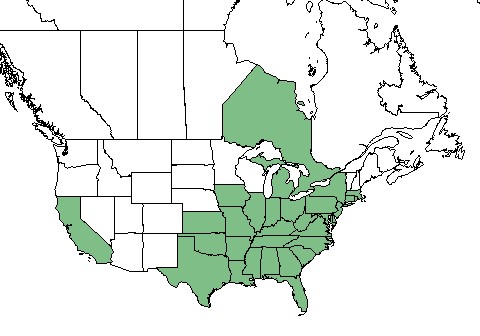Difference between revisions of "Andropogon virginicus"
(→Ecology) |
(→Description) |
||
| Line 22: | Line 22: | ||
Varieties: ''A. virginicus'' var. ''virginicus''; ''A. virginicus'' var. ''decipiens'';<ref name="Weakley 2015"/><ref name="USDA"/> ''A. virginicus'' var. 1<ref name="Weakley 2015"/> | Varieties: ''A. virginicus'' var. ''virginicus''; ''A. virginicus'' var. ''decipiens'';<ref name="Weakley 2015"/><ref name="USDA"/> ''A. virginicus'' var. 1<ref name="Weakley 2015"/> | ||
| − | ==Description== | + | ==Description== <!--Basic life history facts such as annual/perennial, monoecious/dioecious, root morphology, seed type, etc.--> |
| − | <!-- Basic life history facts such as annual/ | + | ''Andropogon virginicus is a monoecious perennial graminoid.<ref name="USDA"/> |
| + | |||
==Distribution== | ==Distribution== | ||
==Ecology== | ==Ecology== | ||
Revision as of 17:02, 12 December 2017
| Andropogon virginicus | |
|---|---|

| |
| Photo by the Atlas of Florida Plants Database | |
| Scientific classification | |
| Kingdom: | Plantae |
| Division: | Magnoliophyta - Flowering plants |
| Class: | Liliopsida - Moncots |
| Order: | Cyperales |
| Family: | Poaceae |
| Genus: | Andropogon |
| Species: | A. virginicus |
| Binomial name | |
| Andropogon virginicus L | |

| |
| Natural range of Andropogon virginicus from USDA NRCS Plants Database. | |
Common Name(s): smooth bluestem, deceptive bluestem, old-field broomstraw, broomsedge, sedge grass, sage grass[1], broomsedge bluestem[2]
Contents
Taxonomic Notes
Varieties: A. virginicus var. virginicus; A. virginicus var. decipiens;[1][2] A. virginicus var. 1[1]
Description
Andropogon virginicus is a monoecious perennial graminoid.[2]
Distribution
Ecology
Habitat
Andropogon virginicus is commonly found in longleaf pine savannas, savannas, flatwoods, maritime wet grasslands, disturbed pinelands, other wetlands, old fields, roadbanks, and disturbed sites.[1]
Use by animals
A. virginicus can encompass 2-5% of the diet for large mammals and terrestrial birds as well as occasionally being used as cover for terrestrial birds.[2]
Conservation and Management
Cultivation and restoration
Photo Gallery
References and notes
- ↑ 1.0 1.1 1.2 1.3 Weakley A. S.(2015). Flora of the Southern and Mid-Atlantic States. Chapel Hill, NC: University of North Carolina Herbarium.
- ↑ 2.0 2.1 2.2 2.3 USDA, NRCS. (2016). The PLANTS Database (http://plants.usda.gov, 30 November 2017). National Plant Data Team, Greensboro, NC 27401-4901 USA.